Research
Our focus is methods development, types of research projects include:
- Tightly integrated co-created, trans-disciplinary research
- Methods consultations in spaces where the methods don’t exist
- Methods expert participation for grant applications/sponsored projects
- U-M HomeLab research studies
Research Co-Creation
BioSocial Methods Collaborative works intensively with collaborators to innovate methods that contribute to study design and collecting and analyzing data. The collaboration teams establish regularly scheduled meetings and well defined timelines, communication flows, etc.
Advanced Computational Neuroscience Network
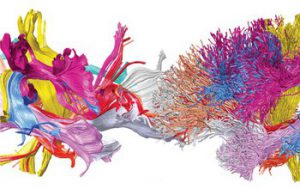
Credit: Franco Pestilli, Indiana Unversity, in collaboration with Mike Jackson, Indiana University
An NSF Big Data Spoke collaboration of six universities to develop ontology-driven standardization, provenance metadata and workflow standards for the growing area of research in data-intense neuroimaging which typically includes additional clinical, cognitive, demographic, genetic and phenotypic data.
Collaborators:
Richard Gonzalez (PI) Ivo Dinov and John Marcotte – University of Michigan
Panda Dhabalewsar, Hamidouche Khaled, Xiaoyi Lu, Hari Subramoni – Ohio State University
Satya Sahoo – Case Western Reserve University
Franco Pestilli, Olaf Sporns, Andrew Saykin – Indiana University
Lei Wand – Northwestern University
Daniel Marcus – Washington University
Funder: National Science Foundation (NSF)
 PEER – Personal Experiences of Everyday Routines: A collaboration to identify cognitive, physiological, and emotional dimensions of an instrumental task of daily living among older adult women with hand pain or arthritis.
PEER – Personal Experiences of Everyday Routines: A collaboration to identify cognitive, physiological, and emotional dimensions of an instrumental task of daily living among older adult women with hand pain or arthritis.
Collaborators:
Richard Gonzalez (PI)
Shannon Mejia (Co-I), former Postdoctoral Fellow/Psychology at the BioSocial Methods
Collaborative, Assistant Professor, University of Illinois Urbana-Champaign
Jacqui Smith, Research Professor, Institute for Social Research, Professor of Psychology
Alicia Carmichael, Research Director, BioSocial Methods Collaborative
Karen Nielsen, Postdoctoral Fellow/Statistics at the BioSocial Methods Collaborative
Funder: Procter & Gamble
 Project FREE: A study focused on appraisals of comfort, distraction, anxiety, and ability to perform; and how the appraisals correlate with observed performance on standardized cognitive tasks.
Project FREE: A study focused on appraisals of comfort, distraction, anxiety, and ability to perform; and how the appraisals correlate with observed performance on standardized cognitive tasks.
Collaborators:
Richard Gonzalez (PI)
Karen Nielsen, (Co-I) Postdoctoral Fellow/Statistics at the BioSocial Methods Collaborative
Alicia Carmichael, Research Director, BioSocial Methods Collaborative
Hani Zainulbhai, Survey Methodology Program, Institute for Social Research
Funder: Procter & Gamble
 Project Control: An exploration of the lifespace of women with adult incontinence.
Project Control: An exploration of the lifespace of women with adult incontinence.
Collaborators:
Richard Gonzalez (PI)
Shannon Mejia (Co-I), former Postdoctoral Fellow/Psychology at the BioSocial Methods
Collaborative, Assistant Professor, University of Illinois Urbana-Champaign
Alicia Carmichael, Research Director, BioSocial Methods Collaborative
Karen Nielsen, Postdoctoral Fellow/Statistics at the BioSocial Methods Collaborative
Hani Zainulbhai, Survey Methodology Program, Institute for Social Research
Funder: Procter & Gamble
 Project WOW: A small, qualitative study to gain insight into women’s initial experiences using a novel tool to complete to a household task.
Project WOW: A small, qualitative study to gain insight into women’s initial experiences using a novel tool to complete to a household task.
Collaborators:
Richard Gonzalez (PI)
Shannon Mejia (Co-I), former Postdoctoral Fellow at the BioSocial Methods Collaborative,
Assistant Professor, University of Illinois Urbana-Champaign
Alicia Carmichael, Research Director, BioSocial Methods Collaborative
Karen Nielsen, Post-Doctoral Fellow/Statistics at the BioSocial Methods Collaborative
Funder: Procter & Gamble
 Project Sniff: An exploration of the various human responses to scent using olfactometers, video and audio recordings, ECG (heart rate), EDA (sweat response), IMU (accelerometers), a respiration belt, and self-report data from surveys.
Project Sniff: An exploration of the various human responses to scent using olfactometers, video and audio recordings, ECG (heart rate), EDA (sweat response), IMU (accelerometers), a respiration belt, and self-report data from surveys.
Collaborators:
Richard Gonzalez (PI)
Alicia Carmichael, Research Director, BioSocial Methods Collaborative
Karen Nielsen (Co-I), Postdoctoral Fellow/Statistics at the BioSocial Methods Collaborative
Vineet Raichur (Co-I), Postdoctoral Fellow/Engineering at the BioSocial Methods Collaborative
Funder: Procter & Gamble
Resilient Running
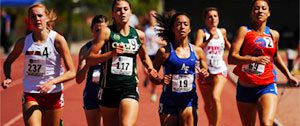 A collaboration with the MiPR Lab, U-M Cross Country and Track teams, Kinesiology, Departments of Family Medicine & Orthopaedic Surgery, Department of Athletic Medicine, and U-M Athletics to understand the biosocial factors contributing to running resiliency and performance.
A collaboration with the MiPR Lab, U-M Cross Country and Track teams, Kinesiology, Departments of Family Medicine & Orthopaedic Surgery, Department of Athletic Medicine, and U-M Athletics to understand the biosocial factors contributing to running resiliency and performance.
Collaborators:
Richard Gonzalez (PI)
Cristine Agresta (Co-I), Assistant Research Scientist and Co-Director of the Michigan Performance
Vineet Raichur (Co-I), Postdoctoral Fellow/Engineering at the BioSocial Methods Collaborative
Research Lab, Kinesiology
Jeffrey Housner, Assistant Professor, Sports Medicine, Medical School
Alicia Carmichael, Research Director, BioSocial Methods Collaborative
Geoffrey Burns, Graduate Student, Kinesiology
Cristina Fanning, Athletic Trainer, U-M Athletics
Jillian Peacock, Graduate Student, School of Information
Funder: U-M Exercise and Sports Science Initiative
Methods Innovation
BioSocial Methods Collaborative is sought out to innovate methods for grant applications, working with existing data sets and connecting disparate data structures.
Stress and Well-being in Everyday Life
 A collaboration with U-M Researchers Kira Birditt and Kayvan Najarian to explore racial health disparities among African American and White participants by measuring cardiovascular reactivity and self-reported measures of stress in (1) everyday life and in (2) classic controlled laboratory stress tests (Cold Pressor Test; Trier Social Stress Test).
A collaboration with U-M Researchers Kira Birditt and Kayvan Najarian to explore racial health disparities among African American and White participants by measuring cardiovascular reactivity and self-reported measures of stress in (1) everyday life and in (2) classic controlled laboratory stress tests (Cold Pressor Test; Trier Social Stress Test).
Funder: National Institutes of Health (NIH)
Population Neuroscience Functional Brain Imaging fMRI Predicts Public Health Campaign
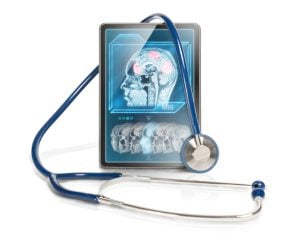 A collaboration with University of Pennsylvania researcher Emily Faulk leading to a PNAS publication. A framework to improve confidence in the generalizability of neuroimaging findings. To take action on this framework collaboration needed between neuroscientists, survey methodologists, biophysicists, biostatisticians, and representatives from across social sciences, and population-based sciences.
A collaboration with University of Pennsylvania researcher Emily Faulk leading to a PNAS publication. A framework to improve confidence in the generalizability of neuroimaging findings. To take action on this framework collaboration needed between neuroscientists, survey methodologists, biophysicists, biostatisticians, and representatives from across social sciences, and population-based sciences.
What is a representative brain? Neuroscience meets population science, PNAS
Survey Measures of Subjective Well-being: Age, Appraisal, and Cognition Effects
 A collaboration with U-M Researcher Jacqui Smith from the Survey Research Center at the Institute for Social Research to establish criteria for a short, reliable and valid survey index of experienced well-being.
A collaboration with U-M Researcher Jacqui Smith from the Survey Research Center at the Institute for Social Research to establish criteria for a short, reliable and valid survey index of experienced well-being.
Funder: National Institutes of Health (NIH)
Project Ride
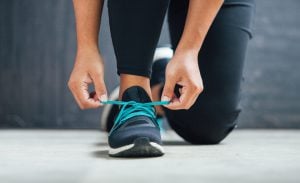 A collaboration with U-M Researcher Cristine Agresta from the School of Kinesiology and an industry partner to explore capturing frequent survey response during a run and combining this data with biomechanical and choice data to identify the combinations that produce a signal.
A collaboration with U-M Researcher Cristine Agresta from the School of Kinesiology and an industry partner to explore capturing frequent survey response during a run and combining this data with biomechanical and choice data to identify the combinations that produce a signal.
Funder: adidas
Expert Methods Consultation
Sometimes innovating methods means adapting existing methods to domains in which they are not applied. BioSocial Methods Collaborative provides consulting on a variety of domains from deep knowledge of physiological channels to innovating new ways of conducting existing experimental paradigms to assisting with programming to connect data channels. It’s not our core work but we seek to serve the research community in their efforts to conduct biosocial research.
Archetypal Paths into Sepsis
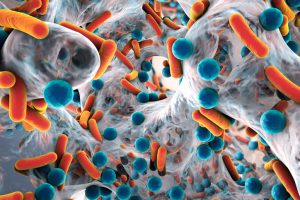 In national cohorts of sepsis patients, the study shows that several distinct paths into sepsis exist. These paths, identified from trajectories of pre-sepsis healthcare use, are predictive of 90-day mortality.
In national cohorts of sepsis patients, the study shows that several distinct paths into sepsis exist. These paths, identified from trajectories of pre-sepsis healthcare use, are predictive of 90-day mortality.
Publication: Paths into Sepsis: Trajectories of Pre-Sepsis Healthcare Use, Annals of the American Thoracic Society (AnnalsATS)
Hallie C. Prescott, Assistant Professor, Internal Medicine, Pulmonary and Critical Care Alicia Carmichael, Research Process Director, BioSocial Methods Collaborative Kenneth M Langa, Professor, Department of Internal Medicine
Richard Gonzalez, Amos N. Tversky Professor of Psychology and Statistics, Director, Bio-Social Methods Collaborative
Theodore J. Iwashyna, Professor, Internal Medicine, Pulmonary & Critical Care
Adaptation of SC-IAT to Children
 We adapted a Single Category Implicit Association Task (SC-IAT) designed for adults to a population of children using DirectRT for a study regarding obesity and self-regulation. This was done in support of the grant with Alison Miller to study self-regulation to promote adherence and health behaviors in children.
We adapted a Single Category Implicit Association Task (SC-IAT) designed for adults to a population of children using DirectRT for a study regarding obesity and self-regulation. This was done in support of the grant with Alison Miller to study self-regulation to promote adherence and health behaviors in children.
EDA Data Analysis Consultation
For an education research study.
E-Prime Programming

Assisted with the design and programming to integrate videos and E-Prime for a psychology study at U-M Dearborn examining how the syntactic structure of language influences speakers to view everyday action scenes.
BioSocial Methods Collaborative Lab Studies
Whether it’s conducting research in the U-M HomeLab and/or using physiological data gathering equipment, we provide support for the entire research life cycle.
Behavioral Immune System
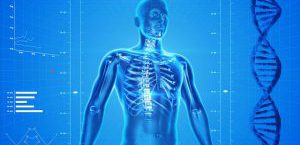 A collaboration with U-M PI Iris Wang to explore how individual’s chronic disease vulnerabilities predict their interoceptive accuracy. Specifically, we use a classic measure of interoceptive accuracy (Schandry task) along with a test of how coherent individual’s subjective-objective experiences are (heart-ratings task).
A collaboration with U-M PI Iris Wang to explore how individual’s chronic disease vulnerabilities predict their interoceptive accuracy. Specifically, we use a classic measure of interoceptive accuracy (Schandry task) along with a test of how coherent individual’s subjective-objective experiences are (heart-ratings task).
Pain Study
 A collaboration with U-M PI Kate Foster, Yay-Huing Cho and Jackie Kim. The BioSocial Methods Collaborative conducted the laboratory session of a three-part study exploring the link between psychological functioning (e.g. mental health, health behavior, and task performance) and how the body physiologically responds to distressing situations.
A collaboration with U-M PI Kate Foster, Yay-Huing Cho and Jackie Kim. The BioSocial Methods Collaborative conducted the laboratory session of a three-part study exploring the link between psychological functioning (e.g. mental health, health behavior, and task performance) and how the body physiologically responds to distressing situations.
Empowerment and Objectification: Conflicting Messages in Contemporary Advertising
 A collaboration with U-M PI Amelia Couture to explore the effect of ‘femtervisements’ where objectifying visual information conflicts with empowering written information (and vice versa) using eye tracking to examine attention to bodies vs faces.
A collaboration with U-M PI Amelia Couture to explore the effect of ‘femtervisements’ where objectifying visual information conflicts with empowering written information (and vice versa) using eye tracking to examine attention to bodies vs faces.
Empathy and Facial Expression Mimicry
 A collaboration with U-M PI Josh Wondra to measure facial muscle mimicry under more realistic vs. exaggerated romantic contexts to test whether mimicry is automatic or dependent on appraisal of context.
A collaboration with U-M PI Josh Wondra to measure facial muscle mimicry under more realistic vs. exaggerated romantic contexts to test whether mimicry is automatic or dependent on appraisal of context.
In this project, we tested the hypothesis that observers only smile in response to happy faces if they believe that something good happened to the person who is smiling. Subjects watched a video of another person who expresses a great deal of joy about something that the subjects think it is reasonable to be happy about, or about something that the subjects think it is unreasonable to be happy about. Subjects saw still images of the other person smiling, frowning, or showing a neutral face. Subjects’ own facial muscle activity was recorded using facial electromyography to check for evidence of facial mimicry.
Alcohol in Popular Media and College Drinking Behaviors
 A collaboration with U-M PI Sonya Dal Cin to measure how engagement (via eye tracking) with narrative media containing alcohol in social contexts relates to actual drinking behaviors.
A collaboration with U-M PI Sonya Dal Cin to measure how engagement (via eye tracking) with narrative media containing alcohol in social contexts relates to actual drinking behaviors.
Engagement with narrative media has demonstrated effects on individuals’ attitudes and behaviors. However, mediators of narrative effects are typically assessed using retrospective self-reports. Explicit self-reports collected during message exposure are also problematic, as the measurement interferes with the engagement process. We explored physiological measures of narrative engagement. Participants watched film clips in which the characters consumed alcohol in social contexts. Eye-tracking was used to measure participants’ attention to alcohol on screen. Skin conductance and heart rate were used as autonomic measures of arousal. Following the clips, participants completed self-reports of narrative engagement, identification with characters, and alcohol-related cognitions and behavior.
Information Acquisition: Stopping Rules
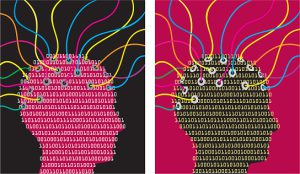 In collaboration with visiting scholar Roberto Nonohay, we analyzed data from 50 individuals as they searched for information in the context of financial/economic scenarios. Each scenario differed in its presentation of probability (uncertainty and risk), consequences (positive and negative), and the valence of consequences (high and low). EEG, ECG, eye tracking and behavioral data were recorded for each participant. Participants responded to the Big Five Personality Test (Short version), Beck Anxiety Inventory, Barratt Impulsiveness Scale, Need for Cognition scale and Maximization and Regret Scales instruments.
In collaboration with visiting scholar Roberto Nonohay, we analyzed data from 50 individuals as they searched for information in the context of financial/economic scenarios. Each scenario differed in its presentation of probability (uncertainty and risk), consequences (positive and negative), and the valence of consequences (high and low). EEG, ECG, eye tracking and behavioral data were recorded for each participant. Participants responded to the Big Five Personality Test (Short version), Beck Anxiety Inventory, Barratt Impulsiveness Scale, Need for Cognition scale and Maximization and Regret Scales instruments.
Belief Updating
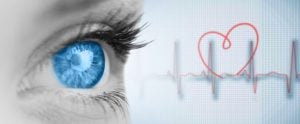 Within a decision-making scenario, each additional piece of information an individual receives can have an impact on their overall assumptions about the scenario and their ultimate decision. This phenomenon is called “belief updating.” Although Bayesian calculations can provide a theoretical explanation for the impact of new information on a decision-maker, in a real decision context these calculations fail to explain the subjective experience of uncertainty. This study explored how individuals update their beliefs given new information and identified the neural, cardiac, and eye gaze correlates of their reactions to belief updating.
Within a decision-making scenario, each additional piece of information an individual receives can have an impact on their overall assumptions about the scenario and their ultimate decision. This phenomenon is called “belief updating.” Although Bayesian calculations can provide a theoretical explanation for the impact of new information on a decision-maker, in a real decision context these calculations fail to explain the subjective experience of uncertainty. This study explored how individuals update their beliefs given new information and identified the neural, cardiac, and eye gaze correlates of their reactions to belief updating.
Project REACH
 Using the U-M HomeLab, this pilot study will explore the feasibility of assessing functional limitations, with an emphasis on upper body limitations, of older adults by asking them to perform everyday household tasks. This project explores the accuracy of self-report and whether compensatory behaviors are being masked by the current self-report protocol. Physiological sensors will be worn during simulated household tasks: ECG (heart rate), EDA (sweat response), IMU (accelerometers), and a respiration belt. They will also be audio and video recorded during the study.
Using the U-M HomeLab, this pilot study will explore the feasibility of assessing functional limitations, with an emphasis on upper body limitations, of older adults by asking them to perform everyday household tasks. This project explores the accuracy of self-report and whether compensatory behaviors are being masked by the current self-report protocol. Physiological sensors will be worn during simulated household tasks: ECG (heart rate), EDA (sweat response), IMU (accelerometers), and a respiration belt. They will also be audio and video recorded during the study.

